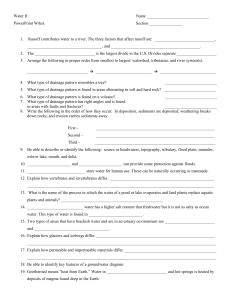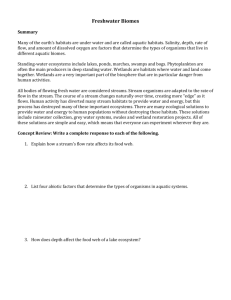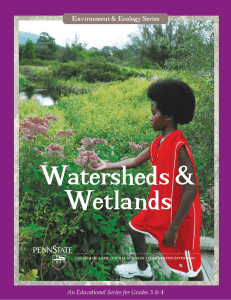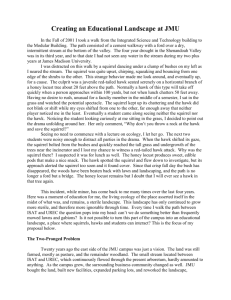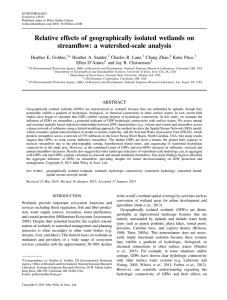Watershed and Wetland Study Guide
advertisement
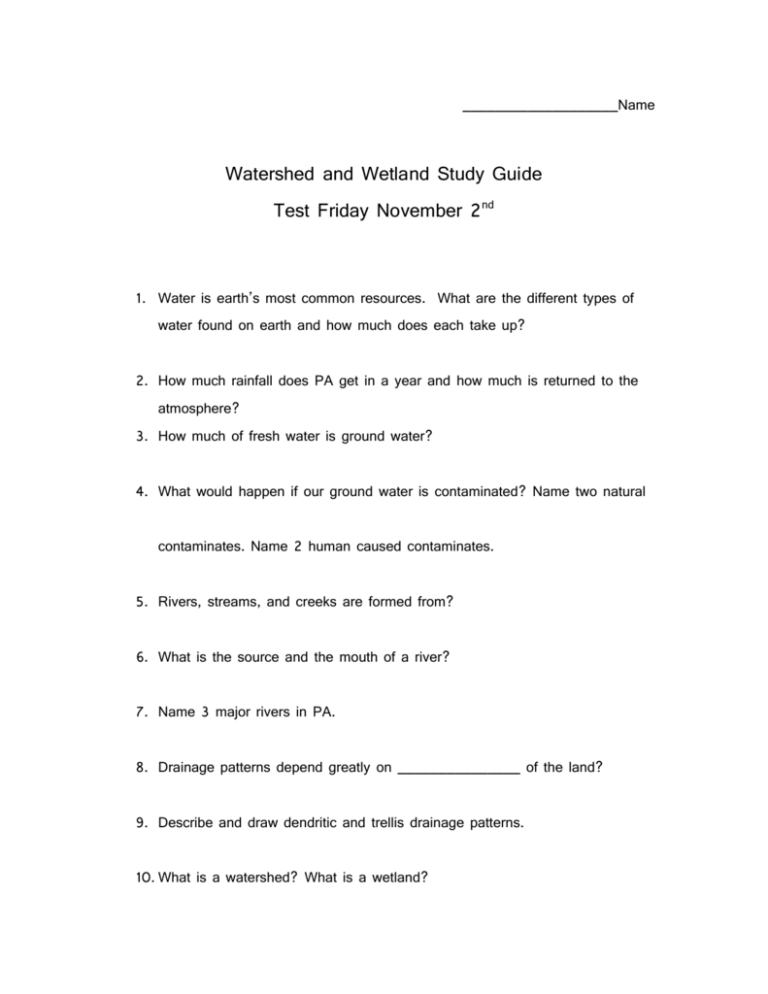
___________________Name Watershed and Wetland Study Guide Test Friday November 2nd 1. Water is earth’s most common resources. What are the different types of water found on earth and how much does each take up? 2. How much rainfall does PA get in a year and how much is returned to the atmosphere? 3. How much of fresh water is ground water? 4. What would happen if our ground water is contaminated? Name two natural contaminates. Name 2 human caused contaminates. 5. Rivers, streams, and creeks are formed from? 6. What is the source and the mouth of a river? 7. Name 3 major rivers in PA. 8. Drainage patterns depend greatly on _______________ of the land? 9. Describe and draw dendritic and trellis drainage patterns. 10. What is a watershed? What is a wetland? 11. How is a watershed created? 12. What do watersheds empty into? 13. What is a stream? 14. What main factor describes the healthiness of a stream? 15. What are the 3 dominant groups found in a stream? Give examples 16. Give examples of macrophytes and their importance to a stream. 17. What is a riparian zone and what benefits are there to a stream? (Of the two programs we talked about which one uses development of the riparian zone) 18. Where does algae fall in the food chain? 19. Describe protists role in a stream. 20. Give examples of 3 macro invertebrates and their bios. (Including water quality tolerances) 21. Give 3 examples of PA fish and their eating habits. 22. Give 3 examples of PA amphibians. 23. What interactions affect the numbers and type of organisms that live in a stream? 24. Describe orders of streams. 25. In PA we have 80% of what type of streams? 26. What affects the temperature of a stream? What affect does that have on the organisms? 27. Streams are unidirectional, what does that mean? 28. What is the importance of substrate in a stream? 29. Sunlight and Turbidity have what affect on a stream? 30. What are 3 essential dissolved solids in a stream? 31. Identify the 2 dissolved gases in water. (Describe how oxygen gets into the water and what would decrease the amount of oxygen.) 32. What have mayflies developed to increase their oxygen intake? 33. Describe the purpose of the alkalinity test. 34. What is a wetland? Give 3 examples. 35. Describe the difference between Swamps, Marshes and Bogs. 36. How many acres are wetlands in PA? 37. Describe differences in Forested, Scrub-shrub, and emergent wetlands. 38. Habitat is a major factor of wetlands, why is this? a. Nearly 80% of what is there in PA? b. 35% of what is found there in the US? 39. Why is it known as a food factory? 40. Name 4 different species that use wetlands as spawning ground. 41. Describe buffer zones and pollution control in wetlands. 42. Describe three negative effects of agriculture on wetlands. 43. Explain how municipal waste disposal can affect wetlands in the United States. 44. Contrast the IWI indicators, give 2 examples of each. 45. What were the results in the 1999 water quality test for the US? 46. Describe how floods and droughts affect wetlands and watersheds? 47. How does global climate change affect coastal wetlands? 48. What are the objectives of the PA Watershed Education program? 49. What are 3 affects on the stream as well as 3 human benefits from the ReLeaf Program? 50. What is my goal, as well as the PA Watershed Education’s goal, for you????
